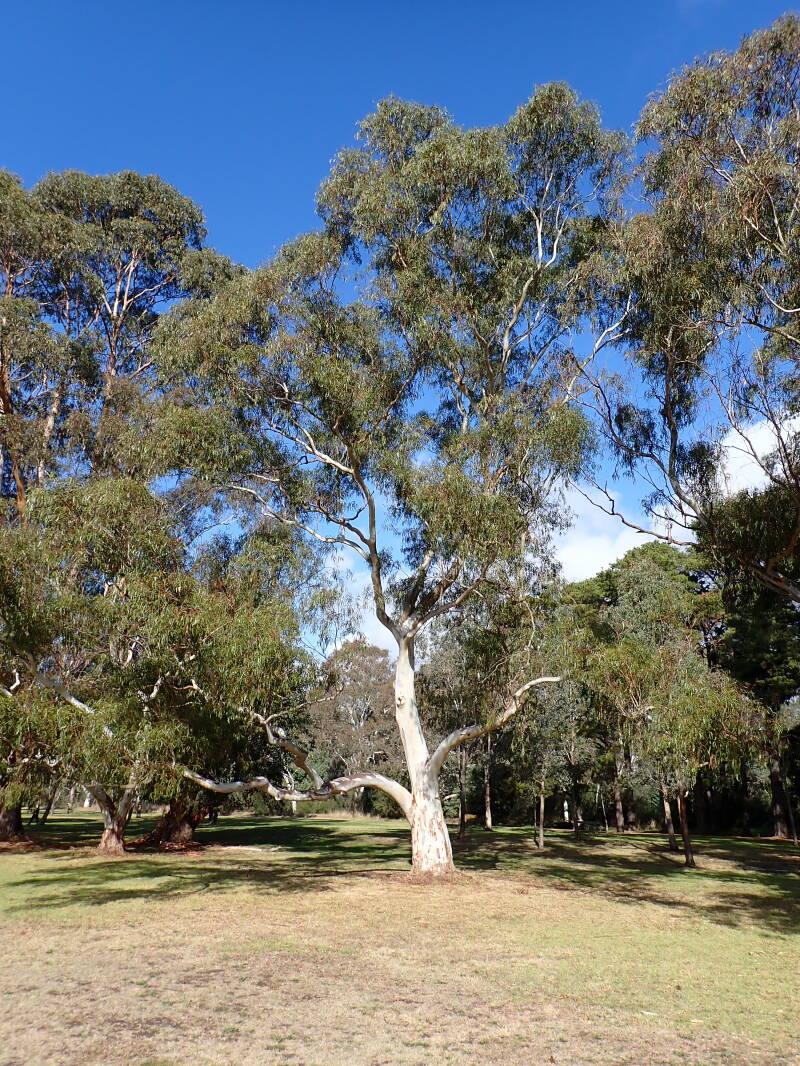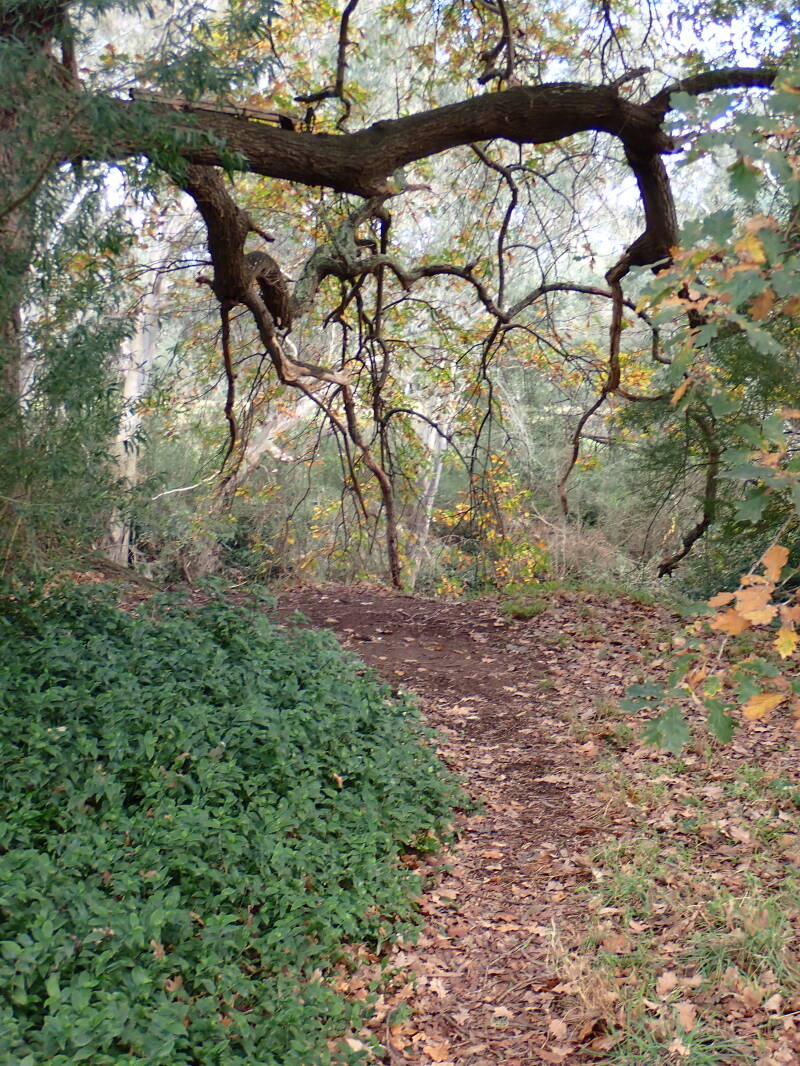Warringal Parklands - 63 trees met
I am excited to report that this week I launched the project, a bit ahead of time, and had my first two hour walk in which I met a total of sixty-three trees. My definition of meeting the trees, includes taking the time to notice them, to take a photo, to occasionally take some samples to help me identify them later, and to list the trees I have met. So, I can proudly say that I have met 63/16,000 trees.
To mark each occasion, I am threading a tiny wooden bead onto a string for each of the trees I meet, and these will eventually be blued onto coasters, or made into bracelets or necklaces, with the end result hopefully being something solid to represent the trees, and a good record of all the trees I meet.
Meeting Trees Takes Time!
One thing I have already learned from this first day, is that meeting trees takes time. In two hours, I had only really met sixty-three trees – a small percentage of 16,000. Remembering that the whole project is to help me make solid the loss of those 16,000 trees, this is already resonating with me. Just how much each tree can give, and in turn, how much we lose when we 'remove' them.
Missing our Trees when in New Zealand
I have just returned from a two-week holiday in New Zealand with my partner. New Zealand is a stunning country, with beautiful landscapes of tree-ferns and native trees including Pohutukawa's, beech trees, totaras, puriris and kauris, rimus and ratas, amongst many others. I am no tree expert (but I am keenly learning as fast as I can!), and New Zealand is very new to me. But I was in awe at the beauty of the landscape. I can credit some of the the level of joy experienced on this trip down to my new-found love of trees in general and the excitement I found in trying to learn what trees were there, but it was also a chance for me to really reflect on how much I miss our Australian landscape of eucalypts, acacias and banksias, when I am in a new environment where they aren't present. I missed them a lot, and when I saw our trees growing there, occasionally (such as in the Auckland Botanic Gardens, where there is a little group of large Eucalypts, I felt excited! In fact, there were quite a few coastal banksias that were a big favorite of the Tui birds, probably because they still had their thick yellow brushy flowers for the birds to feasts on the sweet and delicious nectar, while the native trees had finished their flowering period.
No Audio Input for Two Hours - Can I Survive?
For me, two hours without any audio input of music or books, was a big change. Being out in the open air was a chance to really be with myself and my own thoughts, and it surprised me how wonderful I felt. Not only did I notice trees, but I spent time with various birds, including straw-necked Ibis (with a little duck who was a bit confused where she belonged), magpies, currawongs, and red-rumped parrots. The Sulphur-crested cockatoos are often present at this park, and only a few days ago I had seen my favorite yellow-tailed black cockatoos near the river, always a thrill for me and a such a life highlight.
'Harvey Norman' Forest Department
Less pleasing was the ‘Harvey Norman Forest Department’ of some abandoned couches in the bushes, but I wondered if at one stage they had been utilised by a homeless person as their special spot. Luckily, I did not see much abandoned rubbish here at all. It was a quiet afternoon, with only a few people around, such a couple of gardens maintenance people, a guy operating an automatic line-marking machine on one of the ovals (it looked like he had some robot dogs!), and a few people with their very joyous dogs, such as a little black dog who looked so happy he could have jumped over a rainbow in joy.
The Background Hum of the North East link Project
At one stage, while walking near the river, I noticed the background hum of the Northeast Link works. The noise had been there all along, but as I stood looking over the river, I began to focus more on the sound. While this park acts partly as a buffer, the sound of that hum mixes with the bird calls and creates a sense of tension. I could feel it in my body, interrupting the otherwise almost ecstatic sense of ease and aliveness. And despite the beautiful peace of this place, it was a reminder that great environmental violence was happening not very far away. And that made me feel sad.
Iron Barks and Their Beauty
Reflecting on the wonderful parts of this first walk, another lot of trees that made an impact on me were the Iron Barks. Iron Barks bring back lots of memories for me, from the time I lived in the Whipstick Forest (just outside of Eaglehawk, Victoria, a suburb of Greater Bendigo). The forest there largely consists of these trees, as well as wattle, tea tree, and other scrub, and lately I have started to notice how truly beautiful they can be. Their thick dark rough bark, delightfully hanging leaves and pink flowers look stunning, and they make a forest that feels open, airy, and welcoming, not dark and gloomy like the pine forests seem to be here (to me, the introduced pines just seem very out of place). The birds seem happy and plentiful in the Iron Barks.
List of Trees (a bit of guessing at the moment!)
So overall, a wonderful day was had for my launch of the project. I am at the stage of trying to learn the names of the Eucalypts – there are so many to learn. I have used the photos I took, Google, the EUCLID app, and had a go of naming them, but no doubt many will not be correct. So, I offer this as a rough idea of the tree varieties I met on my first day.
- Various Eucalypts unspecified
- Various Acacias unspecified
- Oaks trees
- Eucalyptus Mannifera
- River Red Gum
- Eucalyptus Melliodora
- Cypress Pine trees
- Red ironbark
- Eucalyptus Dalrympleana (mountain gum)
- Melaleuca
- Eucalyptus Tricarpa (red or mugga ironbark)
- Eucalyptus Coolabah
- Eucalyptus Pilularis (Black Butt)
- Corymbia Citriodora (lemon scented gum)
- Cedar of Lebanon
- Eucalyptus Wandoo (white gum)
- Eucalyptus Ovata (Swamp Gum)
- Eucalyptus Tericornis (Forest Red gum)
- Eucalyptus Benthamii
- Eucalyptus Blakelyi (red gum)
- Japanese hackberry (perhaps)
I will be updating the blog around once a week to report on progress - keep an eye on the pie-chart and the beads as they grow, hopefully along with my knowledge of tree names!







Add comment
Comments